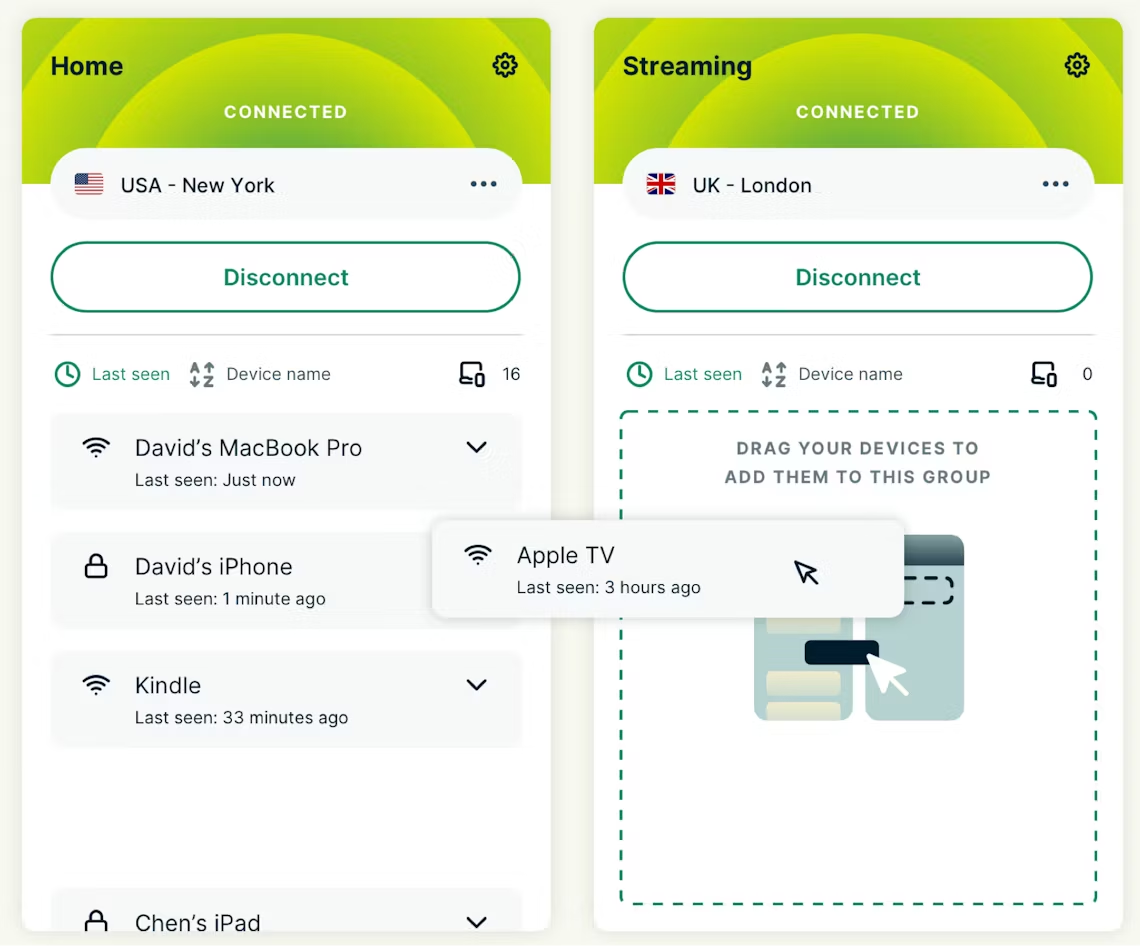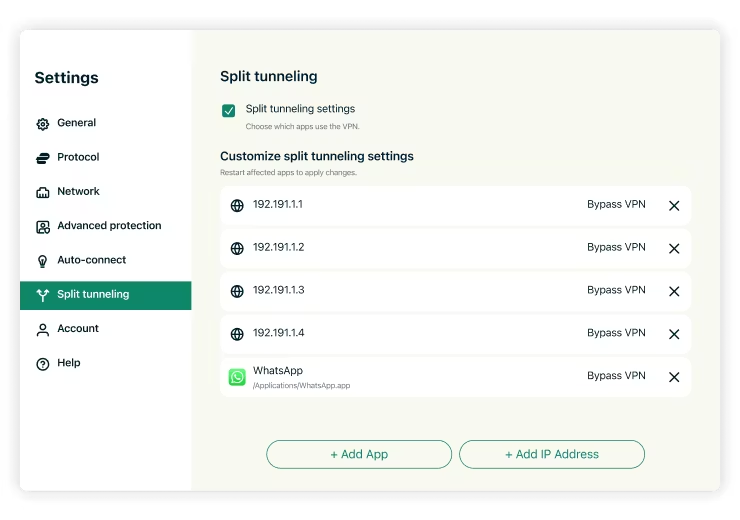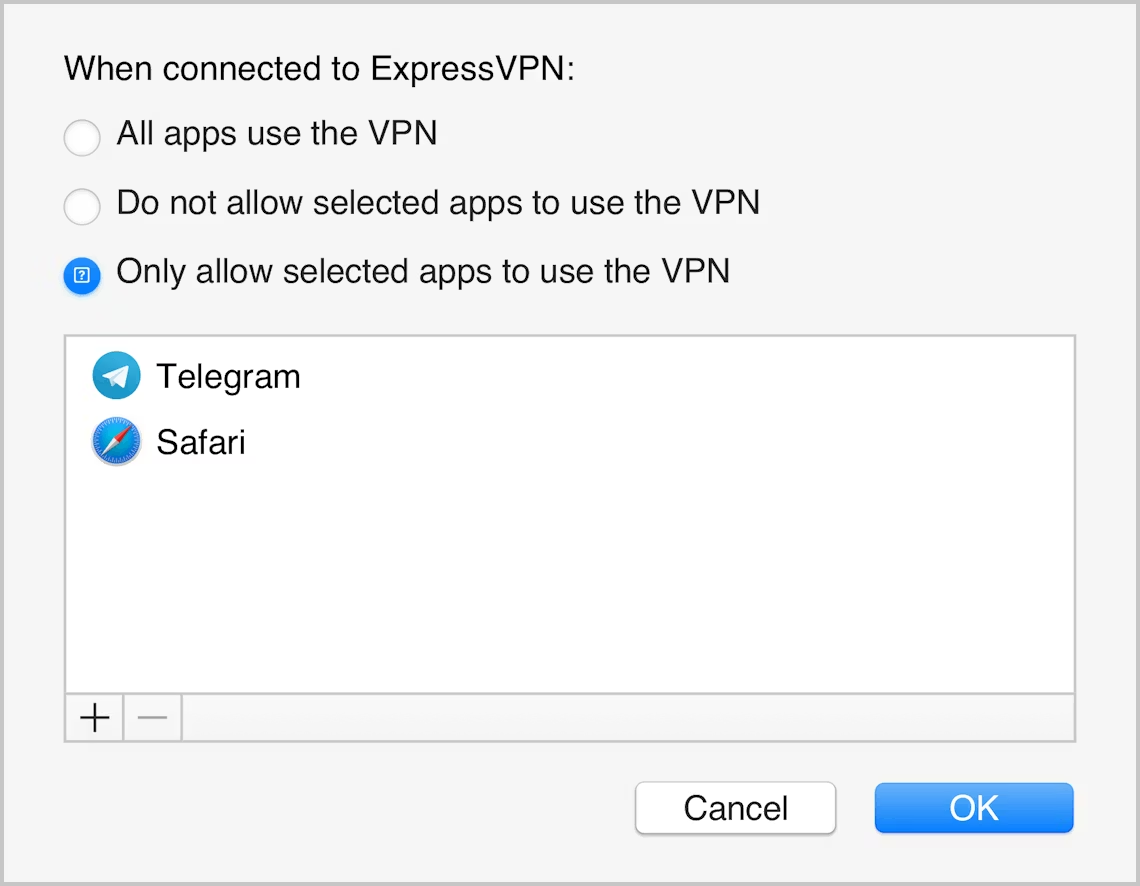What is VPN split tunneling?
VPN split tunneling lets you route some of your device or app traffic through the encrypted VPN tunnel while other devices or apps access the internet directly.
Use split tunneling to protect the traffic you choose, without losing access to local network devices. Available on ExpressVPN for Windows, Mac, Android, Linux, and routers.

Do I need split tunneling?
A basic VPN routes all your internet traffic through an encrypted tunnel to protect your data from hackers and third-party snoops.
If your VPN doesn't support split tunneling, you may run into situations where:
-
You can't access foreign and local internet services at the same time
-
Transmitting all data through the VPN uses up your bandwidth
-
You can't access LAN devices while you're connected to the VPN
With a split-tunneling VPN, you can:
-
Stream foreign movies while using web services from local IP addresses
-
Download safely without slowing down your other web activity
-
Access your network printer while surfing the internet securely
Are there any security risks of split tunneling?
If you set up split tunneling to exclude certain traffic from the protection of your VPN, your internet service provider or a third party could access that traffic.
To protect your online activity, use only VPN-protected connections when you handle sensitive data or downloads.
How does split tunneling work in ExpressVPN apps?
ExpressVPN split tunneling works two ways:
-
Split Tunneling: Protect all connected devices or applications except for those specifically excluded.
-
Inverse Split Tunneling: Protect only selected devices or applications. Everything else flows outside the VPN.
Platforms with VPN split tunneling

Split tunneling for routers
On ExpressVPN for routers, split tunneling comes in the form of Device Groups, which lets you sort the devices connected to your Wi-Fi into groups and connect each group to a different VPN server location. Create up to five groups—perhaps one connected to your real location, another for enjoying overseas content, or even a group that stays unconnected to the VPN.

Split tunneling for Linux
Split tunneling is available on ExpressVPN's Linux GUI app. You can edit your split tunneling settings to add and remove apps and IP addresses and choose which ones use the VPN.
Try the best split-tunneling VPN
If you're not happy with ExpressVPN and its split-tunneling capabilities, just contact Support and get a full refund within 30 days. It's that easy.

